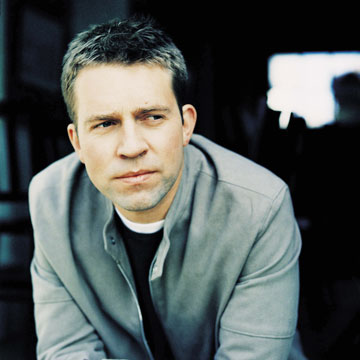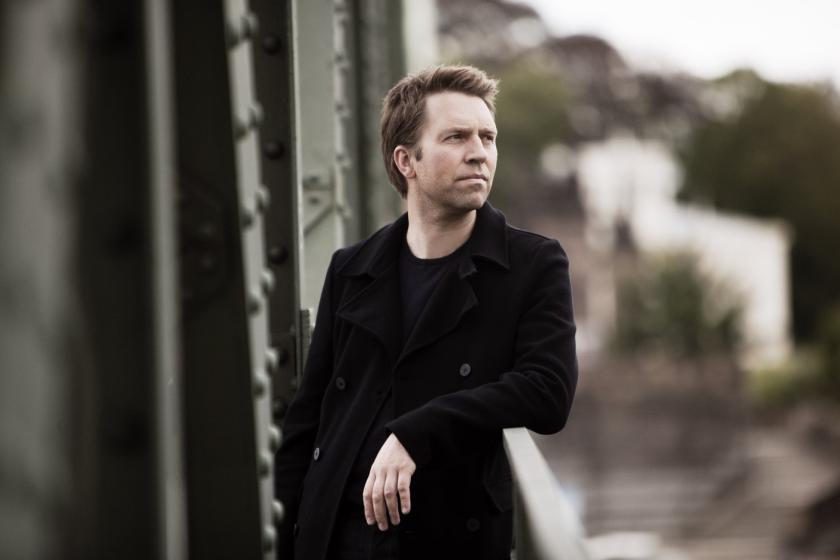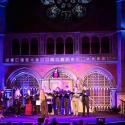If ever there was such a thing as a safe pair of pianistic hands then they would belong to Norway’s Leif Ove Andsnes. There’s a cool, patrician control to everything he does that speaks to thorough preparation, careful interpretative choices and immaculate technique. Thrill-seekers and risk-takers may want to look elsewhere, but for everyone else Andsnes offers the chance to hear cleanly through to the skeleton of a work. No histrionics or affectations muddy the silhouettes on show, and if occasionally one longs for a moment of abandon then it’s a desire easily satisfied by 10 minutes in the company of any number of lesser pianists.
Currently deep into his Beethoven Journey with the Mahler Chamber Orchestra, Andsnes’s affinity for the composer seems only to have grown. The strangely slight Piano Sonata in F Op 54 – the palate cleanser between the Waldstein and the Appassionata – might have been an unlikely opener but proved a natural fit for the pianist. A decorously poised minuet gives way to a second theme in romping octaves, which can all too easily sound like an exercise if treated with any less than Andsnes’s precision. The passagework continues all the way through to the finale, and this uncomplicated statement of musical skill set us up for the rather more inscrutable Bartok Suite Op 14 which followed.
Andsnes is surely among the purest, most technically rigorous performers of his generation
There’s a charm to this miniature that comes from giving almost nothing emotional away but doing it with so much wit and poise that it’s impossible not to be beguiled. Movements end mid-gesture, huge climaxes resolve into a shrug. If the comedy wasn’t pointed as broadly as it might be by Andsnes, then he compensated in the ferocious rhythms of the perpetuum mobile sections, bringing every possible gleaming inch of salon polish to the intellectual repurposing of Bartok’s folk melodies.
 Playfulness wasn’t especially dominant in Beethoven’s Sonata in A Op 101 either, where the mock-martial solemnity of the second movement can gain so much energy from a blunter treatment. The chords of the opening movement however were balanced and weighted with Andsnes’s trademark care, and the sonata offered him every opportunity to exploit this in the contrapuntal webs of melody that Beethoven creates. He was more comfortable in these discursive sections than the passages of passionate, melodic monologue, and the question of the interval was whether a second half of Liszt and Chopin would prove emotionally too much for a pianist happier to describe feeling than display it.
Playfulness wasn’t especially dominant in Beethoven’s Sonata in A Op 101 either, where the mock-martial solemnity of the second movement can gain so much energy from a blunter treatment. The chords of the opening movement however were balanced and weighted with Andsnes’s trademark care, and the sonata offered him every opportunity to exploit this in the contrapuntal webs of melody that Beethoven creates. He was more comfortable in these discursive sections than the passages of passionate, melodic monologue, and the question of the interval was whether a second half of Liszt and Chopin would prove emotionally too much for a pianist happier to describe feeling than display it.
Liszt’s “Pensées des morts” from the Harmonies poetiques et religeuses is an epic in miniature, roaming over the lower extremes of the piano in an attempt to add weight and drama to a fairly flimsy musical structure. It’s an entertaining enough showpiece, but it says so much about Andsnes’s taste and technique that it verged on the vulgar under his touch, Liszt’s harmonic vampings finding nowhere to hide among the clean, classical lines of his playing. Chopin fared better, with the Nocturne in C minor trickling liquid gold in the right hand, and the Ballade in F minor fretting with beautiful insistence at the frayed edges of its theme.
Andsnes is not without his weaknesses, but I’d take these any day over the over-demonstrative strengths of other pianists. Together perhaps with Christian Tetzlaff (by no coincidence, surely, a frequent collaborator), Andsnes is surely among the purest, most technically rigorous performers of his generation, a musician where so often we find only a pianist.













Add comment